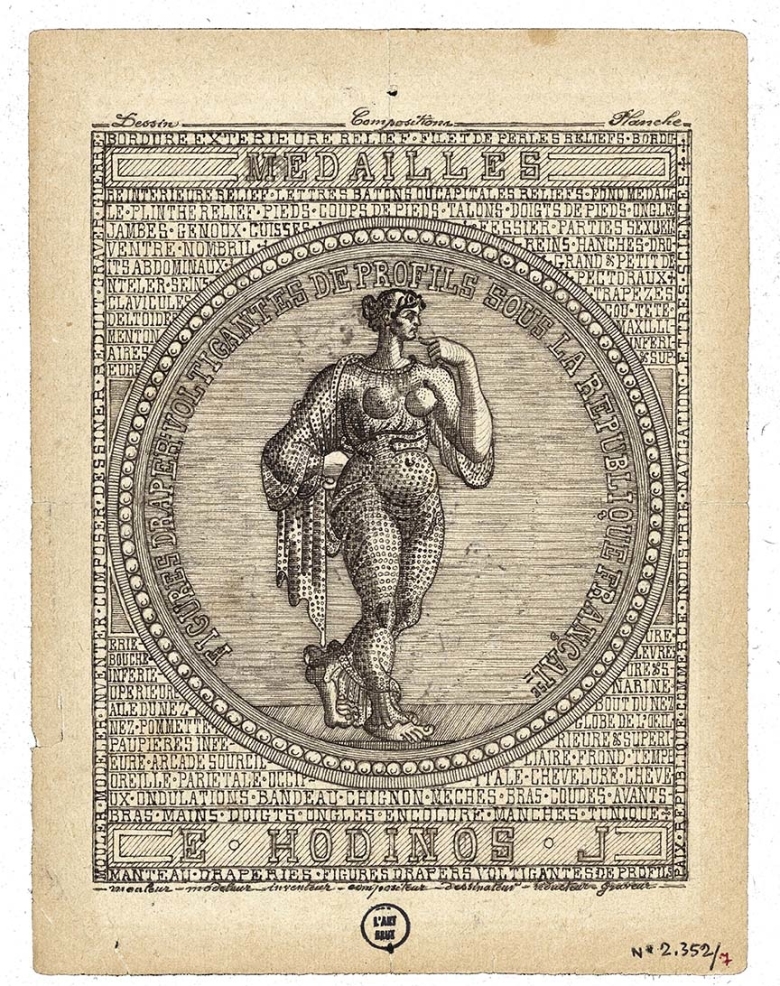
Invitation to discover an oeuvre: Emile Josome Hodinos, by Roxane Fuschetto, tour guide at the Collection de l'Art Brut
Under this heading, we regularly feature the favorite work of one of our Collection de l'Art Brut tour guides.It was almost ten years ago that I discovered Emile Josome Hodinos's oeuvre for the first time. Then a student and museum guard for the Collection de l'Art Brut , I was deeply and lastingly impressed by his drawings. Unconsciously, my mind took in the graphic strictness of his drawings, as counterbalanced by the disproportionate body forms.
A few years later, while strolling through the Festival de la Cité being held in Lausanne, I stopped to listen to the actor Jean-Quentin Châtelain reciting a text. He was in fact voicing texts written by Emile Josome Hodinos: not only did the stories catch my attention, but the persisting and repetitive rhythm of the words ended up by totally captivating me. Indeed, the words hammered at my ears as might a punching machine against a metallic surface.
In fact, prior to being admitted to the Ville-Evrard psychiatric hospital in 1876, Emile Josome Hodinos enjoyed the promising perspective of a brilliant career in medal engraving. It is not known what exactly catapulted this young (twenty-three years old), middle-class Parisian into a troubled existence: perhaps (as) a result of having witnessed at eighteen, the particularly violent period of the bloody "Commune de Paris" (1871) or, more intimately, a personal episode unknown to us.
As if he wished to mark the break represented by his internment, Joseph Ernest Ménétrier (his real name) re-baptized himself Emile Josome Hodinos, and reinvented his own biography. In his texts, he indiscriminately blends elements of his daily life as a mental patient with those of his past as an apprentice engraver, but including as well a fantasy world featuring his new personality, existing in times and places he describes in painstaking fashion.
It is indeed Hodinos' very search for an identity that arrests our attention: the way he attains his goal by at once creating and describing it. Hodinos does preparatory sketches for molding his medals and, on those sketches, he includes a string of words describing the composition he has in mind, including a drawing of it in the middle of the page. To these at once pictorial and verbal descriptions he then adds a description of the act he will be accomplishing. That description comes across in words to do with both the action itself — e.g. casting, molding, inventing, composing — and the professions entailed: Emile Josome Hodinos signs his drawings and identifies himself as a caster, pattern maker, inventor, composer, designer, reducer and engraver.
Although certainly aware of the impossibility of completing his project (for of course, he has no engraving facility in the hospital), Hodinos is virtually free from the state of being anonymous and at loose ends, thanks to this never-ending descriptive liberty: in labeling himself as an engraver, he in fact asserts the fact of his actually being an engraver and, in the process, simply of his being at all.
Publish Date: 11.12.2017